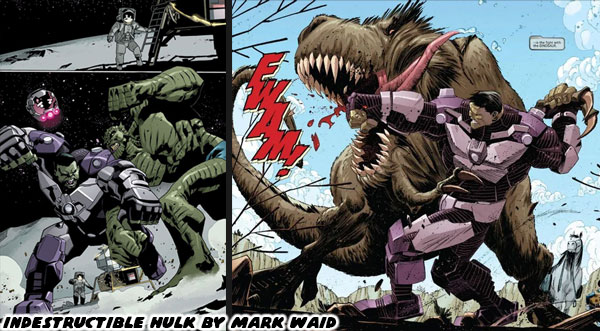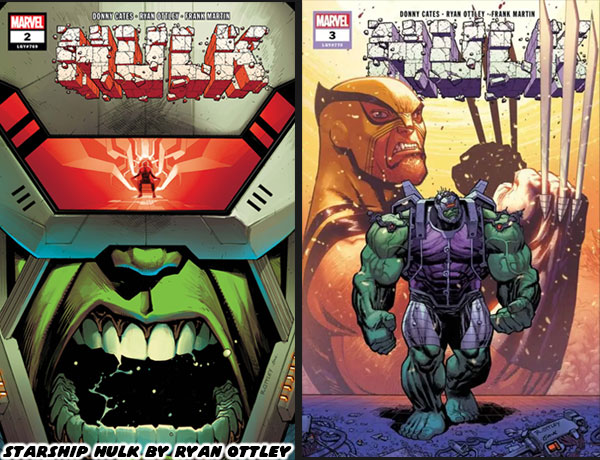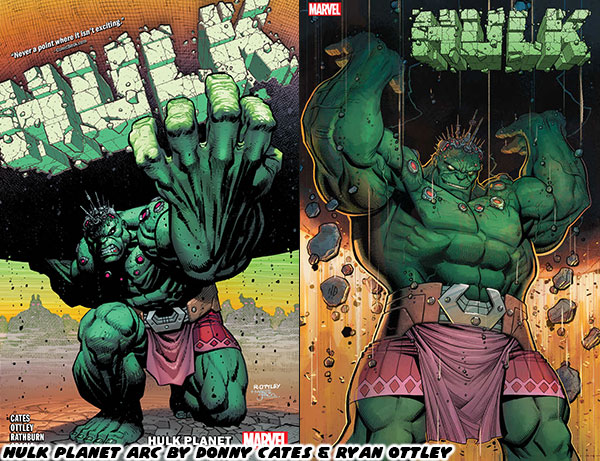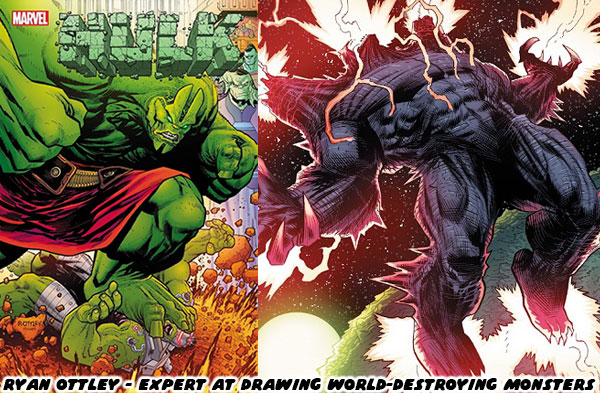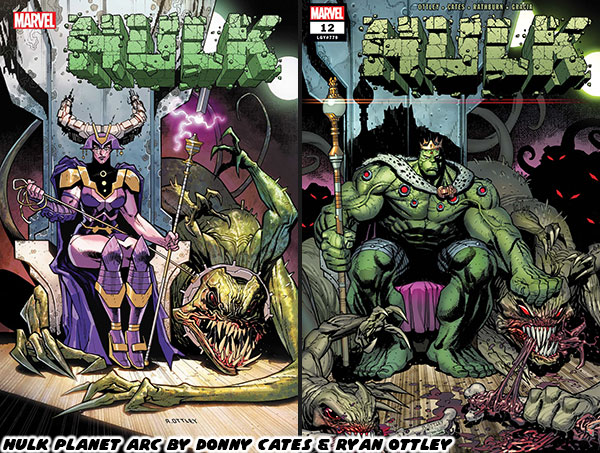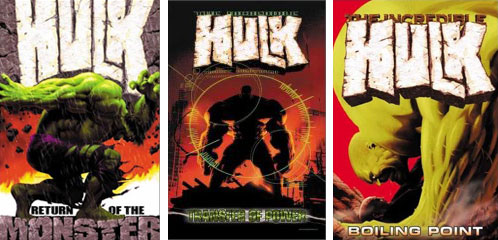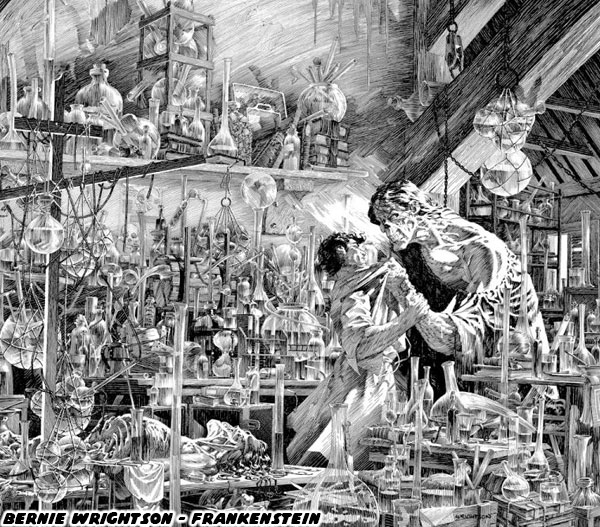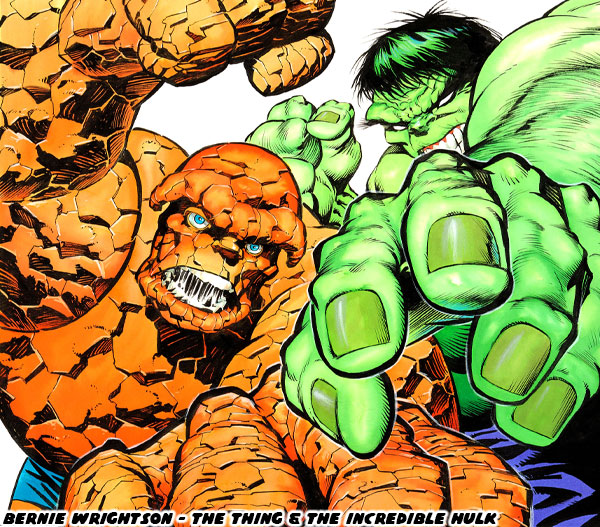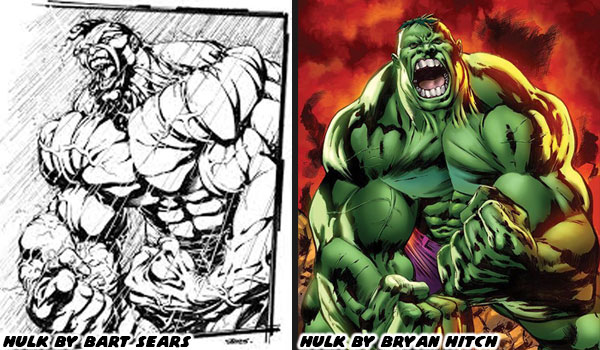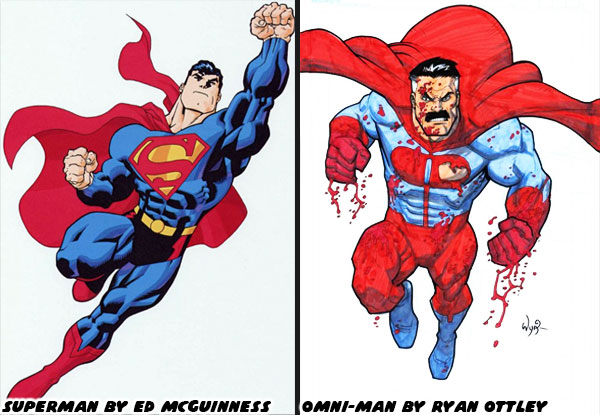I hope my rambling series on the Hulk has kept you entertained these past couple of weeks. I had fun researching, putting it together, and sharing my thoughts on the best way to present the character. I hope it helps budding writers, and artists think about the approach they take when working on their own stories. I also wished it helped non-Hulk fans understand the appeal of the Jade Giant. He was certainly much more complex than has been presented in the recent Marvel live action films, and television shows. Today I’d like to talk about my favorite artists to work with the character. Let’s pretend that only one living artist allowed to draw the character until they retired. Who would I choose, and in what order?
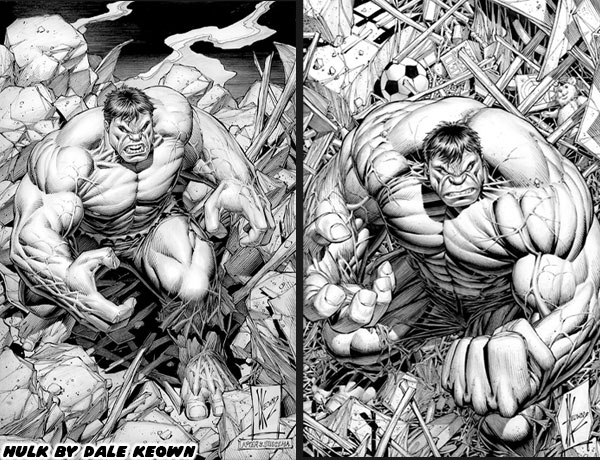
In the number one spot is Dale Keown. In my opinion he is, and remains the best Hulk artist ever. He’s illustrated countless iconic moments thanks to the writing of Peter David. His sense of scale, proportion, and strength is so great it should be studied by all comic artists. Especially those trying to make memorable strong characters. His style simply works whether the story involves the classic “Savage” Hulk, the street savvy Joe Fixit, the genius Professor Hulk, or the tyrannical Maestro. He is adept at drawing epic battles, horror stories, alien monsters, heroic team-ups, and dramatic arcs equally well. He is additionally good at drawing normal-sized heroes, and villains. This allows him to frame them alongside the Hulk so we get a sense of scale. To me Dale Keown is the standard that every modern Hulk artist is measured against. It is a well deserved honor.

My second choice to draw the Hulk forever, and ever is Arthur Adams. Just about all the same praise I heap on Dale Keown applies to Mr. Adams as well. The major difference between the two is that Art knows monsters better than any other living artist. From the largest kaiju to the smallest imp, from pulp monsters that appeared only once in an obscure book, to the world famous Universal Horror monsters. Mr. Adams has drawn all of them at least once in his career. Drawing monsters is absolutely in his DNA. He has been rendering highly detailed pieces for 40 years, and shows no sign of slowing. The Hulk is one of the greatest monsters he’s ever brought to life, but to say that his greatness is limited to the Hulk would be a disservice to his talents. He is a fantastic pin-up artist, and can arguably be called the best X-Men artist, the best Fantastic Four artist, and the best Avengers artist to ever live. Saying he should only draw the Hulk from this point on would rob the world of a true genius.
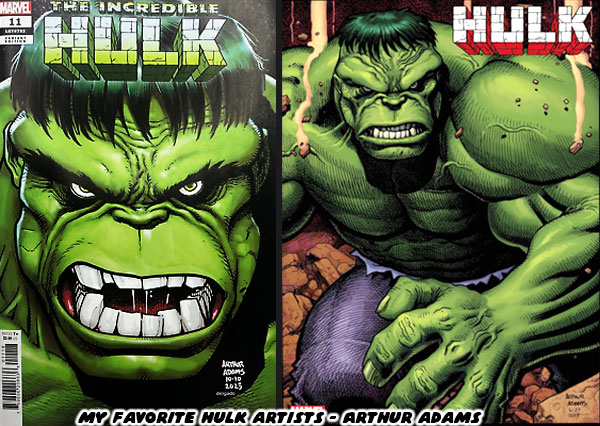
My third choice for who should draw the Hulk in perpetuity is relatively new. In fact he did not exist in my rankings until a few weeks ago. The same thing applies to my number five choice. Ryan Ottley is one of those people that was born to draw powerful characters. If the Hulk is the strongest there is, then he deserves an illustrator that knows how to present it. Mr. Ottley’s work on the Starship Hulk arc written by Donny Cates was absolute madness, but in a good way. He is known for drawing gratuitous violence in the Invincible series, and was able to bring that gore into the Hulk but did so sparingly. He has a surprisingly unique take on creature, and monster designs that is unlike his peers. These twisted creations work in the context of the series, especially when the Hulk has to tear through swaths of powerful opponents. Mr. Ottley also knows his supporting characters, and does a great job illustrating the Hulk’s allies, and rivals. I just wish he had gotten more than 14 issues to show off his talent. I would kill to see his take on the Leader, the Abomination, or the Maestro.
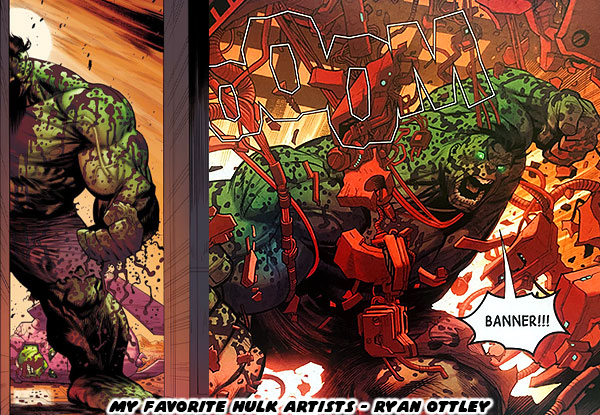
The fourth person on my list was previously my number three. I have already sung the praises of Ed McGuinness, and will continue doing so until my dying day. He is one of those people that you want to create a second Hulk book, just so he can have more to draw. I mean if there can be a Spectacular Spider-Man, Amazing Spider-Man, Web of Spider-Man, and Ultimate Spider-Man comics all out at the same time then why can’t we have two or more Hulk books going? McGuinness draws the Hulk so well that it hurts thinking I will never be half as good as he is at drawing the character. His rendering of the Hulk uses every synonym of power that you can think of. He has force, might, energy, and intensity. The only limitation for McGuinness is that he is too good at drawing muscular characters. Even the “normal” heroes are swollen. It makes the Hulk have a diminished impact when he shares a panel with characters that have the same physique but are a few feet shorter. But that’s a minor issue for someone that I’ve said was born to draw the character.
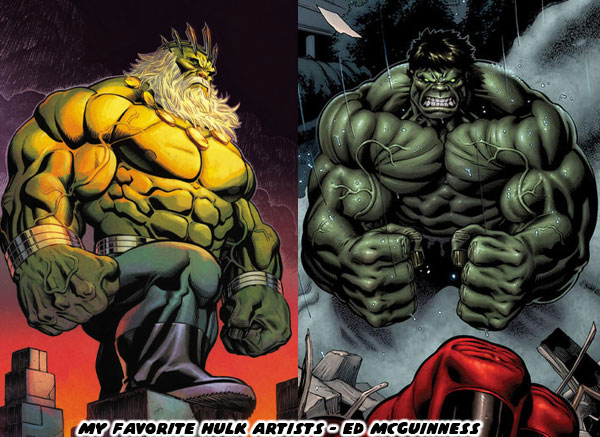
The fifth person that I think could carry the Hulk for all time would be Nic Klein. I said previously his style was equal parts Bernie Wrightson, and Mike Deodato Jr. His take on the Hulk oozed strength. The monsters, and demons he draws tap into some primordial fears of humanity. He presents the stuff of nightmares in vivid detail. It’s scary how good he is at bringing the ugly to life. If the Hulk book is only about horror then there is no one else on the list better qualified to draw it. I wanted to see how he would draw other Marvel characters working with, or against the Hulk. I wanted to see if he could render technology, weapons, or battle sequences with the Hulk. But based solely on the few issues he’s released in 2024 I can tell that he is up to the task. The sky is the limit for Mr. Klein, and I look forward to following it.
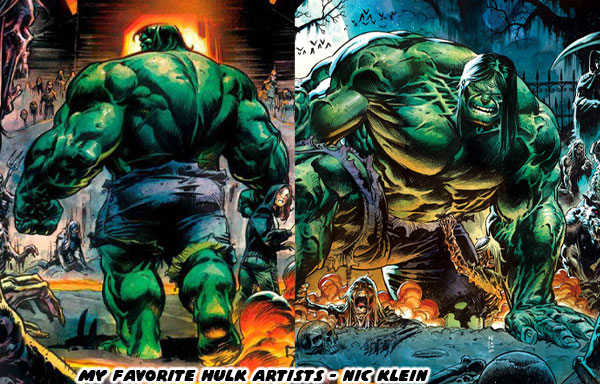
I want you to think of Joe Madureira as my honorable mention. He is an artist that would have been a top-five in my book, possibly a top-three to carry the Hulk forever. That is of course if only he got a chance. The Hulk is an absolute unit when he draws him. Proportionally landing somewhere in between McGuinness, Ottley, and Klein. The thing is with the exception of some concept sketches, and the occasional cover, he hasn’t really had a chance to show fans what he could do with the character.
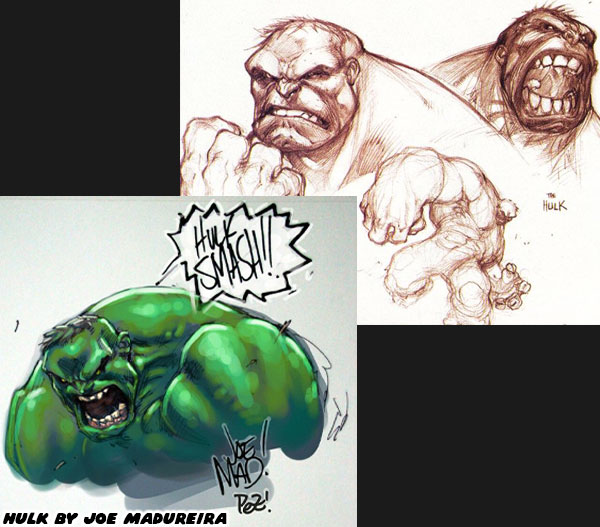
Joe Mad’s style of art oozes personality. He comes from a generation of artists that’s much more animated than any other illustrator that made their mark in the ‘90s. Similar to Humberto Ramos, artists in that era were pulling influences from manga, and video games into their comic work. That is to say it looked vastly different than anything else on the shelves. The fact that he drew massive bruisers so well that I was furious that he never seemed to land a run on the Hulk. Worse yet, when he finally got a chance to draw a power character for Marvel it ended up being the Red Hulk.
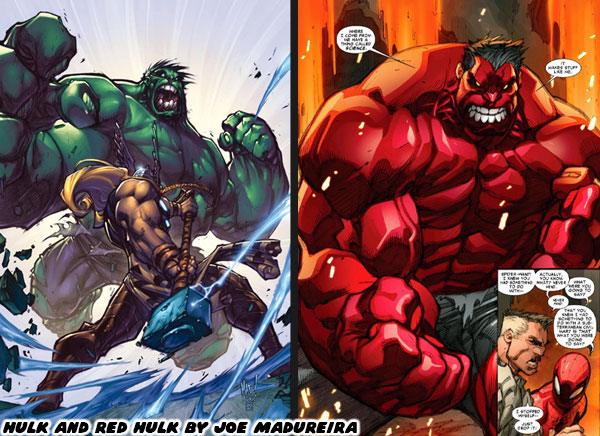
As a comics fan it felt like I was living in the worst possible timeline. The best artists to never draw the Hulk were finally given a chance by the powers that be. Only to find out that they would be drawing the red clone character instead. If I was upset that Ed McGuinness’ talents were wasted on a 10+ issue run featuring mainly the Red Hulk, I was twice as angry when Joe drew the Red Hulk for a Spider-Man team up. Just to see what it would have looked like I changed the hue on the Red Hulk in Photoshop. It helped me imagine that I was in a better timeline. The constant disappointments with Marvel writers, and editors was one of the reasons why I walked away from comic books for more than a decade.
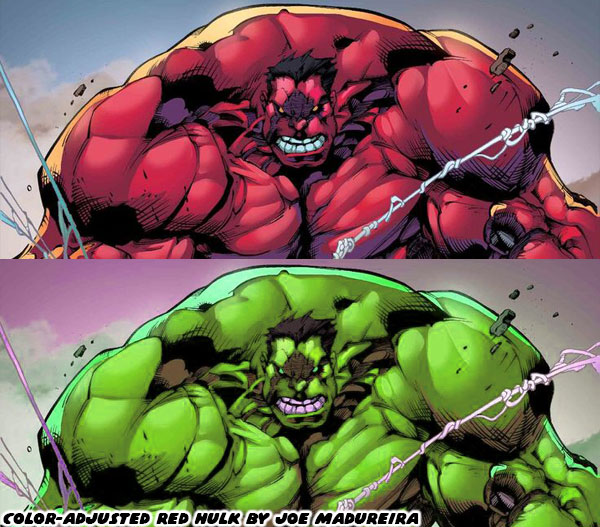
I pray that someone at Marvel might let Joe Mad, or Ryan Ottley get a chance to draw a proper Hulk arc in the future. It would certainly give me a reason to start collecting again. There were many other artists that could draw a fantastic Hulk. I might talk about them someday. For now I’d like to hear your thoughts. Did you have a favorite artist that drew your favorite characters? Was there an artist that you could imagine would be a great fit for a book if they ever got a chance? I’d like to read about it in the comments section. As always if you would like to sponsor me
please visit my Patreon page and consider donating each month, even as little as $1 would help make better blogs and even podcasts!


















